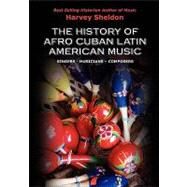The History of Afro Cuban Latin Music
, by Sheldon, Harvey- ISBN: 9781453623091 | 1453623094
- Cover: Paperback
- Copyright: 9/14/2010
George Gershwin introduced Afro Cuban Music in America in 1926. Xavier Cugat during the 1930's introduced The Rumba dance had America dancing through the 40's. Hollywood featured him in many musicals.Three great innovations based on Cuban music hit the USA after World War II: the first was Cubop, the latest Latin jazz fusion. In this, Mario Bauza and the Machito orchestra on the Cuban side and Dizzy Gillespie on the American side were prime movers. The rumbustious conguero Chano Pozo was also important, for he introduced jazz musicians to basic Cuban rhythms. Cuban jazz has continued to be a significant influence. The mambo first entered the United States around 1950, though ideas had been developing in Cuba and Mexico City for some time. The mambo as understood in the United States and Europe was considerably different from the danzón-mambo of Orestes "Cachao" Lopez, which was a danzon with extra syncopation in its final part. The mambo which became internationally famous was a big band product, the work of Perez Prado, who made some sensational recordings for RCA in their new recording studios in Mexico City in the late 1940s. About 27 of those recordings had Benny Moré as the singer, though the best sellers were mainly instrumentals. The big hits included Que rico el mambo (Mambo Jambo); Mambo#5; Mambo #8; Cherry Pink and Apple Blossom White. The later (1955) hit Patricia was a mambo/rock fusion. Mambo of the Prado kind was more a descendent of the son and the guaracha than the danzón. In the U.S. the mambo craze lasted from about 1950 to 1956, but its influence on the bugaloo and salsa that followed it was considerable. Other big bands followed were Tito Puente, Tito Rodriguez, and Noro Morales.







